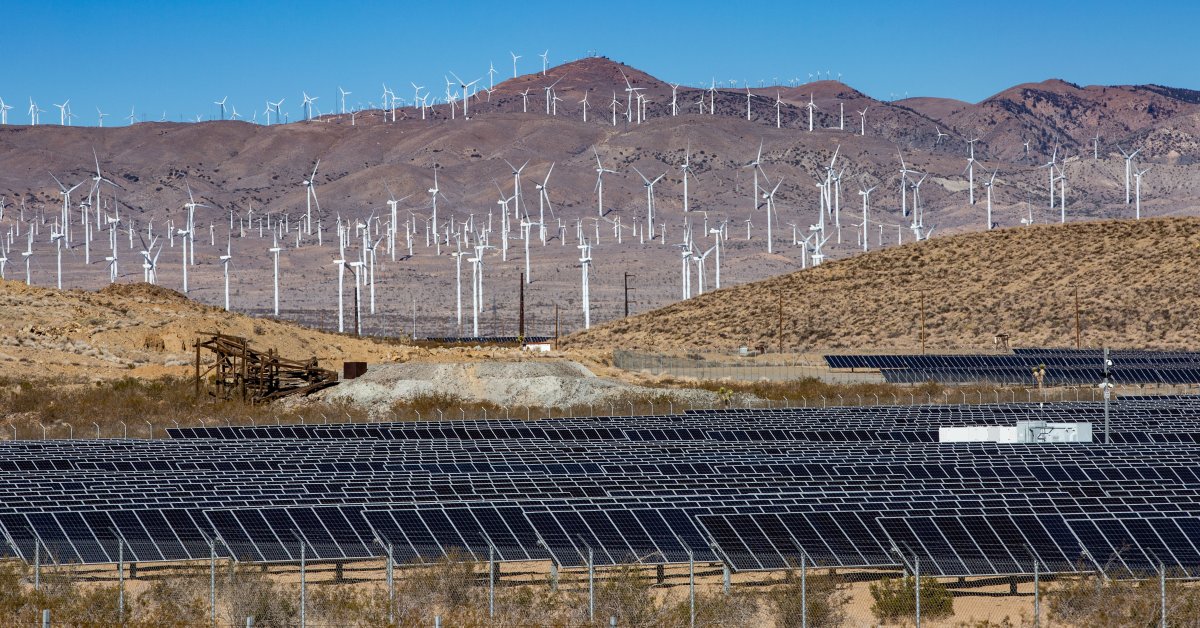If you’re like me, there’s a kind of momentary terror that comes from remembering things that could have gone really, really badly. Your mind is wandering, and then all of a sudden you recall a time you almost turned your bike into oncoming traffic, and along with it comes a little spike of panic at all the horribleness that might have resulted if things hadn’t gone the way they did. I’m not sure if there’s a name for the feeling. If not, I suggest we call it Particularly Horrible Events We Went Without syndrome: PHEWWW, for short.
I get a bit of the PHEWWWs when I think about the way that U.S. climate action went in 2022. Or rather, about the way it almost went. Because the single biggest bright spot in that story this year, and quite possibly the most significant action in the history of the U.S. emissions fight, nearly didn’t happen.
I’m talking about the Inflation Reduction Act of 2022 (IRA), the largest piece of climate legislation ever taken up by the U.S. Congress, which was passed along party lines by the Democrat-controlled chambers this summer. That action opened up billions of dollars in funding to help the country turn away from CO2-emitting fossil fuels and toward renewable energy, battery-powered vehicles, heat pumps, and other climate-friendly technologies, and it came down to months of negotiations between Senate Majority Leader Chuck Schumer and the Senate’s stubborn coal-state centrist, Joe Manchin of West Virginia.
Those talks broke down in mid-July, and for more than a week, it seemed that the prospect of meaningful climate action in the U.S. was dead. With Republicans likely to take control of at least one chamber of Congress in the next election (they gained a majority in the House of Representatives in November) the window for passing something to wrench the U.S. onto a better emissions path was closing, and there was no telling when such an opportunity might come again. Then, in late July, a stunning bit of news came out: Manchin and Schumer had been talking in secret. And, somehow, they had come to an agreement that would do more for the fight against climate change than ever before. More wrangling followed, this time with Senator Krysten Sinema of Arizona, another centrist holdout, who had a problem with a tax provision that annoyed incredibly rich people. “I thought we wouldn’t pass the bill,” Schumer told Politico. “It was hard to figure out how to make it work.”
But the bill did pass. There were compromises on emissions, and compromises on taxes. Still, all of a sudden, from nothing, the U.S. had an industrial climate policy that was the envy of the world. “We have technologies that are cost-effective and ready to go, and now you have policy certainty to go with it,” says Dennis Wamsted, an analyst at the Institute for Energy Economics and Financial Analysis. “The combination is going to lead to a transformation in the next five years that I think people have yet to wrap their heads around.”
Still, the IRA was a far cry from what had been promised in President Joe Biden’s original climate plan. Out were provisions like one that would pay utilities to switch to clean power generation and penalize those that didn’t. In were concessions to the fossil fuel industry that Manchin had championed, like mandates for the federal government to auction off rights to drill for oil in federal lands and waters. “We will look back on 2022 as the year the U.S. finally invested in a new clean economy,” says Abigail Dillen, president of environmental nonprofit Earthjustice. “At the same time, we are still living through an oil and gas rush, with the U.S. unfortunately investing more than ever in long-lived fossil infrastructure.”
Still, the good the IRA will do mostly outweighs the bad. But it’s far from smooth sailing for the green transition from here. Supply chain problems lingering from the global pandemic are likely to slow down clean energy build outs in the next year. Lack of electricity transmission infrastructure may be a longer-term problem. And though House Republicans won’t be able to repeal the IRA this session thanks to Democrats’ control of the Senate (and there’s enough red state goodies in the bill that there’s some doubt the GOP would even want to), they are likely to try to use their new power to slow down implementation. The IRA also won’t get us where we need to go on its own. The Biden Administration’s goal is to cut about half of all U.S emissions by the end of the decade—the IRA will likely get us to about 40%.
But thinking about where we would be without the IRA is important, too—if a bit scary. There has been plenty of bad news on the climate front this year, with disasters like Hurricane Ian, record breaking heat waves in Europe and China, and a mega-flood in Pakistan. COP27 delivered a notable breakthrough on payments to poor countries affected by climate change, but delivered far less progress on emissions. Imagine, on top of it all, that we also had a U.S. climate policy failure of historic, world-jarring dimensions: the collapse of the most ambitious Presidential climate agenda ever, due to the opposition of a single member of the President’s own party.
That reality very nearly came to pass. If it did, 2022 would have been the year that seemed to prove that real change to avert climate catastrophe was impossible. Instead, the right things were said in the right rooms in Washington D.C., a bill was passed, and we got a glimmer of hope—not what many of us hoped for, but far more than anything we’ve gotten before.
More Must-Reads From TIME



